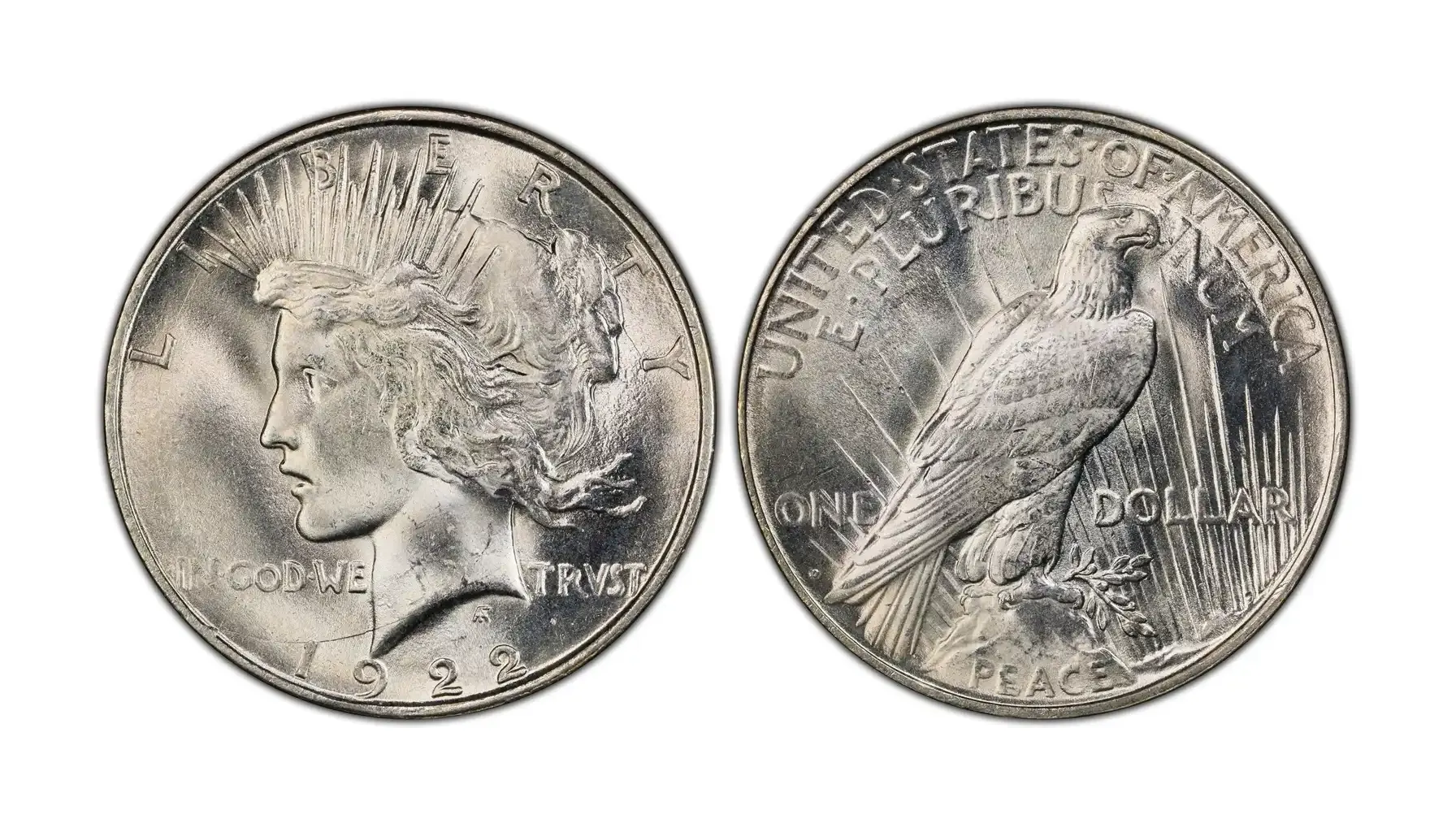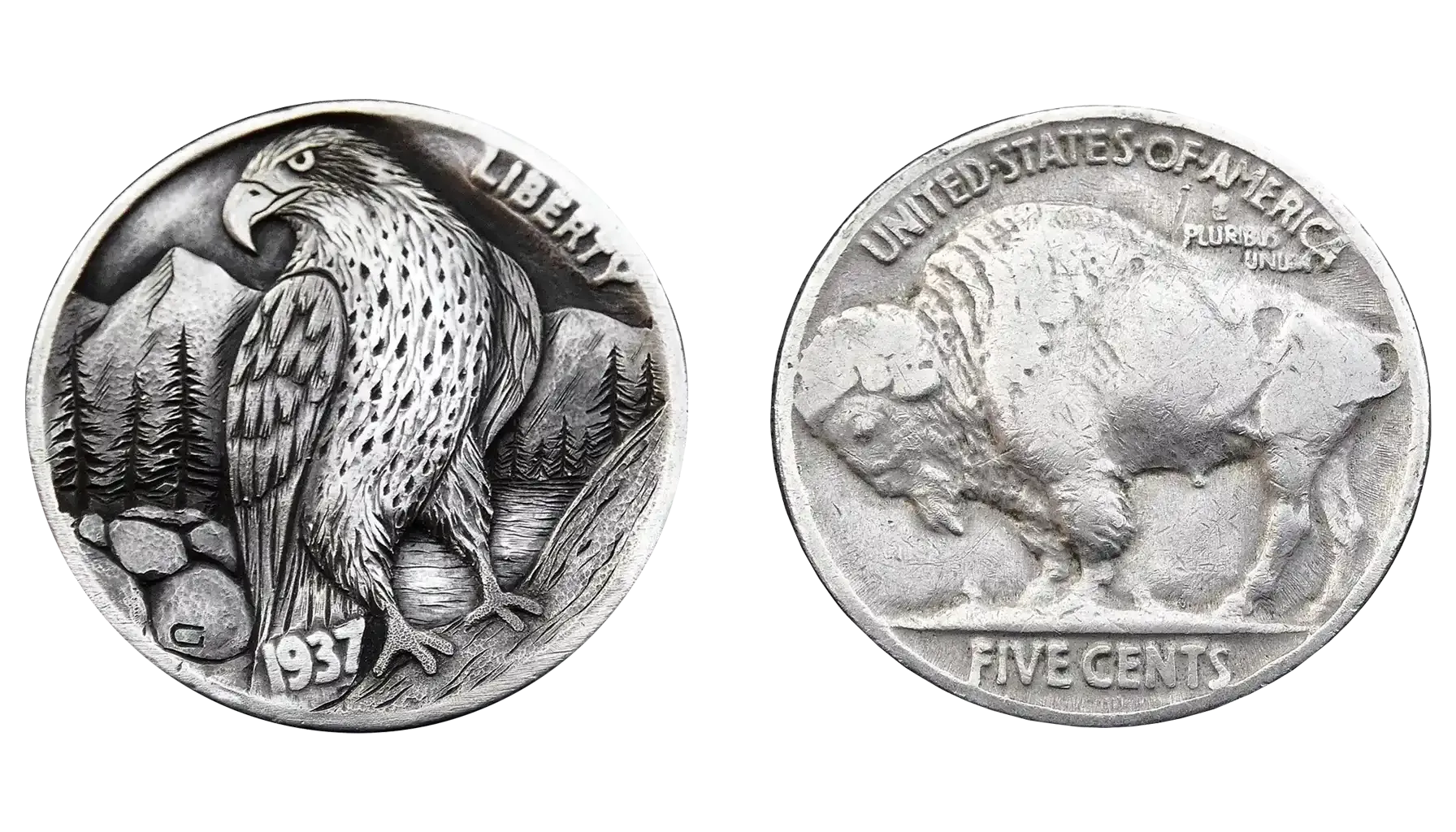Contents:
- Specifications
- Historical Context
- 1934 Wheat Penny Value Chart (by Mint, Grade & Color)
- 1934 Wheat Penny Error List
- How to Evaluate Your 1934 Lincoln Wheat Penny
- Real Market Data: Recent Auction Highlights
- Tips for Your Collection
- US Coin 1934-D Lincoln Penny Coins Copy 95% Coper Manufacturing
- The Verdict: How Much Is a Penny from 1934 Worth?
In a world of contactless payments and digital wallets, it’s easy to overlook a small penny. But if that penny happens to be a 1934 Lincoln Wheat cent, you might be a lucky one.
Most of them are common and trade for a modest premium over face value of 1934 penny. But some can sell for $1,500 or more, especially in mint state or if they carry rare mint errors.
So, how much is a 1934 wheat penny worth? You’ll learn exactly what to look for, how to grade your coin’s condition, how to spot rare varieties, and how to check old coin value.
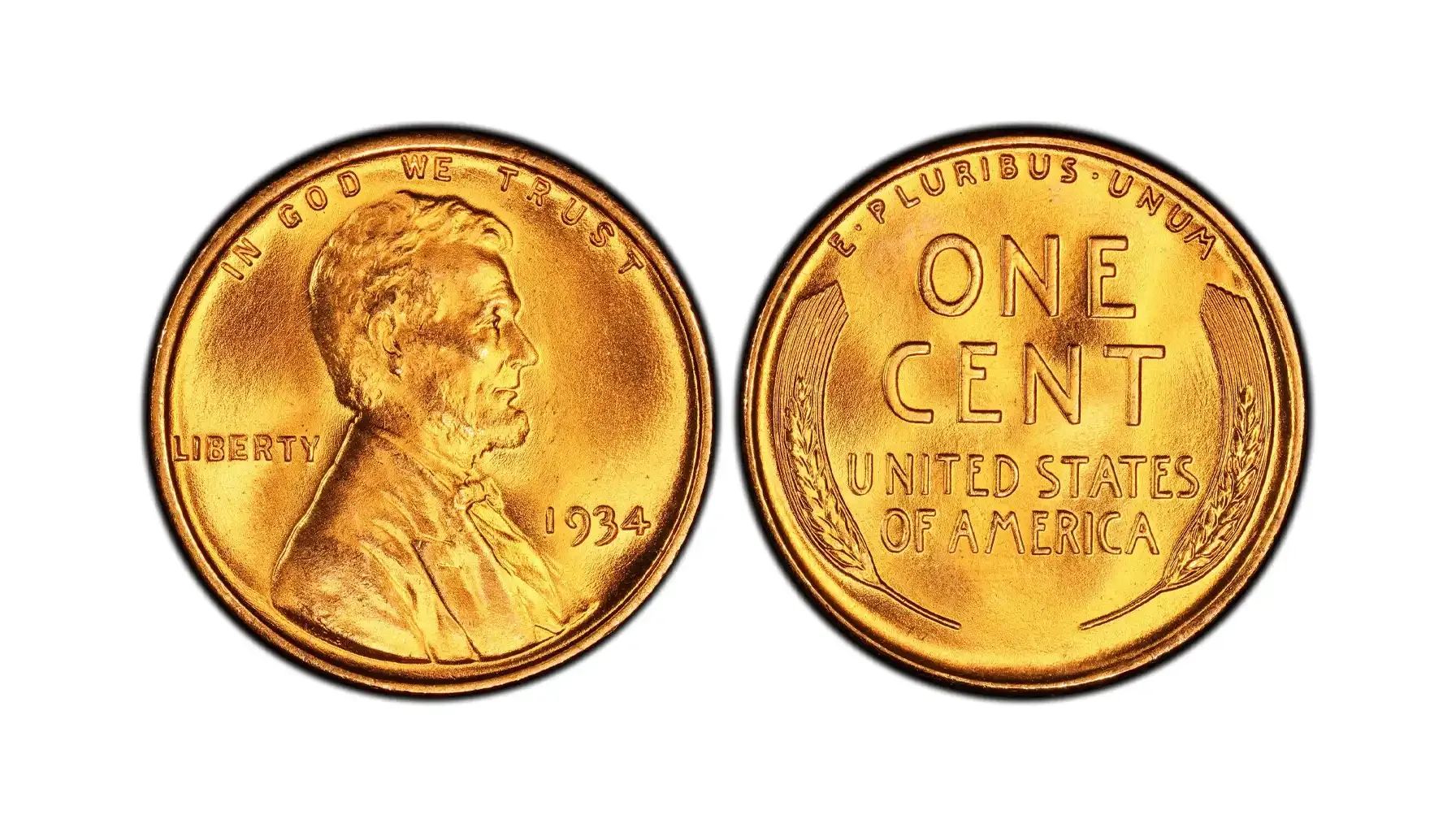
Specifications
Specification | Details |
Denomination | 1 Cent |
Official Name | Lincoln Wheat Cent |
Year | 1934 |
Designer | Victor David Brenner |
Composition | 95% Copper, 5% Tin and Zinc |
Weight | 3.11 grams |
Diameter | 19.05 mm (0.75 in) |
Thickness | 1.52 mm |
Edge | Plain (Smooth) |
Mint Marks | No Mint Mark (Philadelphia), “D” (Denver) |
Mint Locations | Philadelphia (1934 no mint mark penny), Denver (1934 D penny) |
Mintage (Total) | ~247,526,000 |
Mintage (Philadelphia) | 219,080,000 |
Mintage (Denver) | 28,446,000 |
Strike Type | Business Strike |
Proofs Issued? | No (Proofs were not produced in 1934) |
Obverse Design | Portrait of Abraham Lincoln |
Reverse Design | Two wheat ears flanking “ONE CENT” |
Historical Context
The year 1934 marked the heart of the Great Depression. Despite economic turmoil, the U.S. Mint struck over 219 million Lincoln cents, helping keep commerce flowing in a time when every cent truly mattered.
Designed by Victor D. Brenner, the obverse featured Abraham Lincoln, while the reverse showed the classic twin wheat stalks—symbols of strength, growth, and resilience.
No pennies were struck in San Francisco that year. So, the 1934 issue is relatively simple to categorize, with two main mint varieties:
Philadelphia (1934 no mint mark wheat penny)
Denver (D)
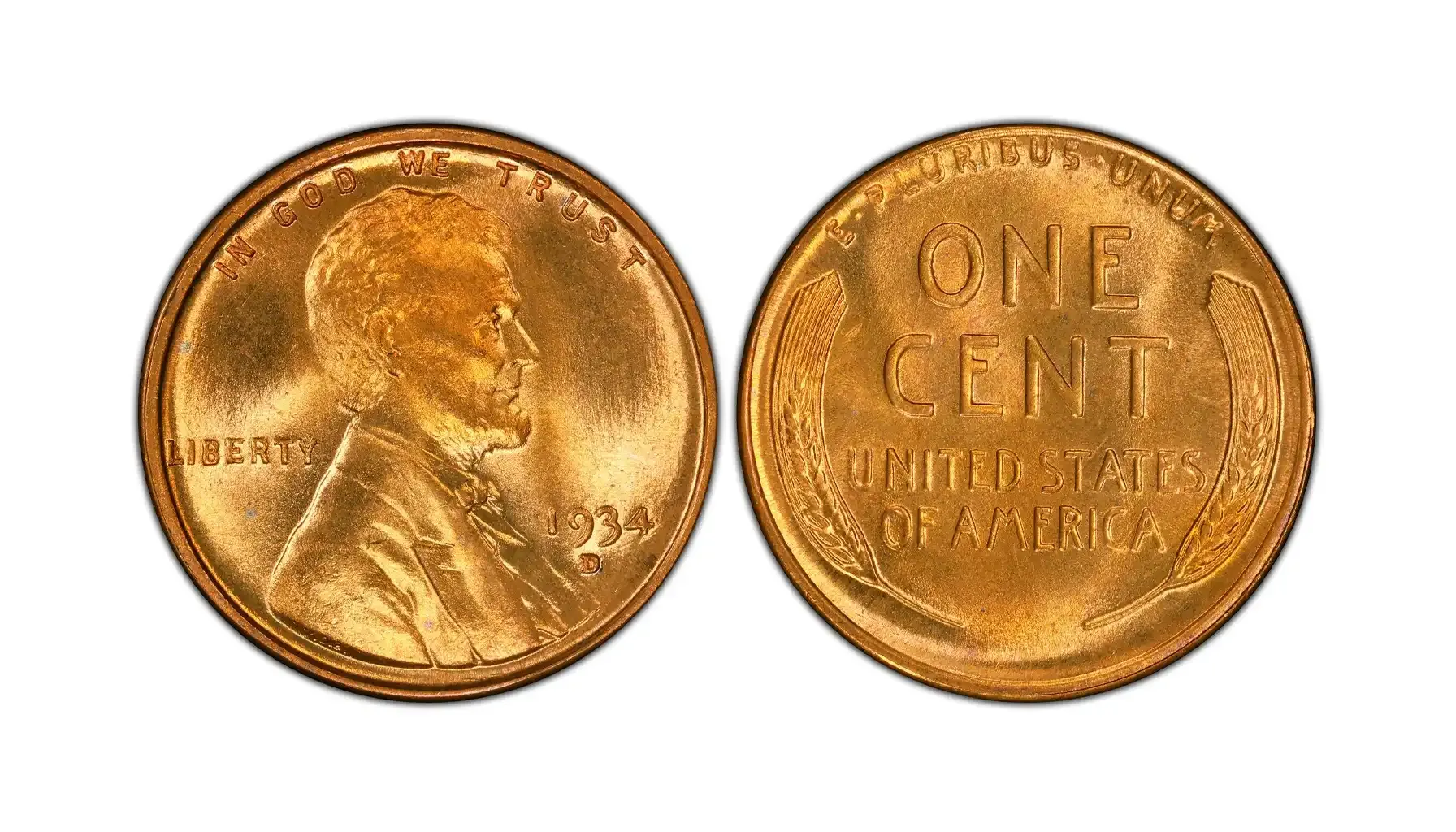
1934 Wheat Penny Value Chart (by Mint, Grade & Color)
Grade | 1934 (P) BN | 1934 (P) RB | 1934 (P) RD | 1934-D BN | 1934-D RB | 1934-D RD |
G4 (Good) | $0.10 | — | — | $0.25 | — | — |
VG8 (Very Good) | $0.15 | — | — | $0.30 | — | — |
F12 (Fine) | $0.20 | — | — | $0.40 | — | — |
VF20 (Very Fine) | $0.25 | — | — | $0.50 | — | — |
EF40 (Ext. Fine) | $0.35 | — | — | $0.75 | — | — |
AU50 (About Unc.) | $0.75 | $1.00 | $2.00 | $2.00 | $2.50 | $4.00 |
MS60 (Mint State) | $4.00 | $6.00 | $12.00 | $8.00 | $10.00 | $18.00 |
MS63 | $8.00 | $14.00 | $28.00 | $15.00 | $24.00 | $40.00 |
MS64 | $12.00 | $20.00 | $40.00 | $25.00 | $35.00 | $60.00 |
MS65 | $20.00 | $40.00 | $80.00 | $45.00 | $75.00 | $120.00 |
MS66 | $40.00 | $80.00 | $150.00 | $100.00 | $175.00 | $250.00 |
MS67 | $150.00 | $250.00 | $1,500+ | $350.00 | $550.00 | $1,200+ |
Disclaimer:
RD (Red) coins carry the highest premium due to superior eye appeal and original luster.
RB (Red-Brown) coins exhibit partial original color and sit in the mid-tier penny 1934 value range.
BN (Brown) coins are the most common and least valuable but still collectible in higher grades.
The 1934 penny value today is based on certified auction results (PCGS, NGC, Heritage) and reputable dealer listings as of 2024–2025.
1934 Wheat Penny Error List
1. Doubled Die Obverse (DDO)
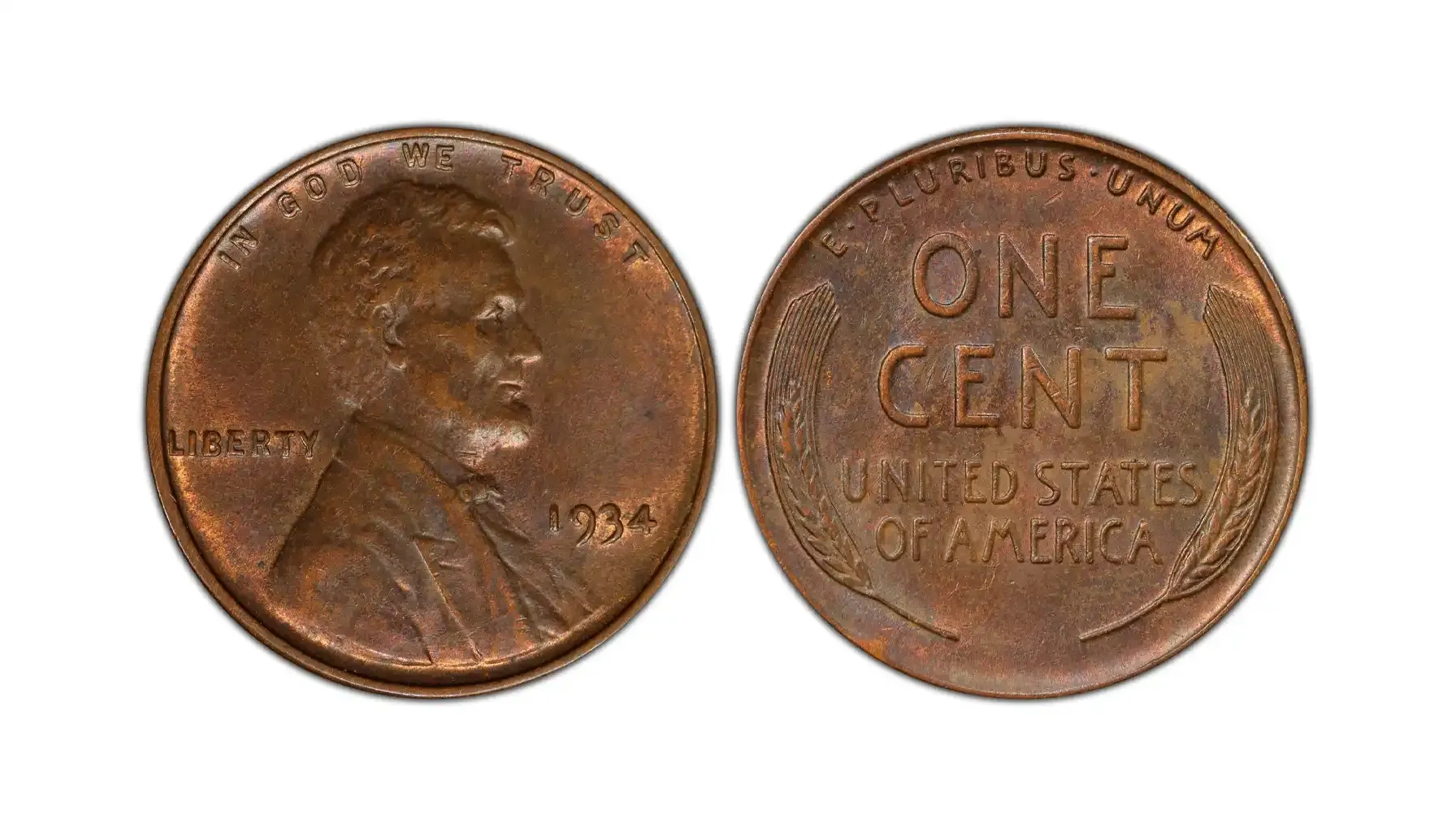
This is the most valuable and desirable 1934 penny error. It occurs when the obverse die was impressed twice at slightly different angles, creating a visible doubling effect.
What to look for:
Strong doubling on “LIBERTY”
Doubling on the motto “IN GOD WE TRUST”
Slight but noticeable doubling on the “1934” date
How much is a 1934 penny worth in this case? $100 to $1,500+, depending on the sharpness of the doubling and the coin’s condition. Red (RD) examples in Mint State are the most expensive.
2. Repunched Mint Mark (RPM - D over D)

Only applicable to 1934-D cents, this error occurred when the Denver mint mark was punched twice into the die, slightly misaligned.
What to look for:
A secondary shadow or notch beneath or above the “D”
Most visible under 10x or greater magnification
Typically found near the date
This error 1934 D penny value: $30 to $150 in uncirculated condition, with sharp examples fetching a premium among variety collectors.
3. “BIE” Die Break
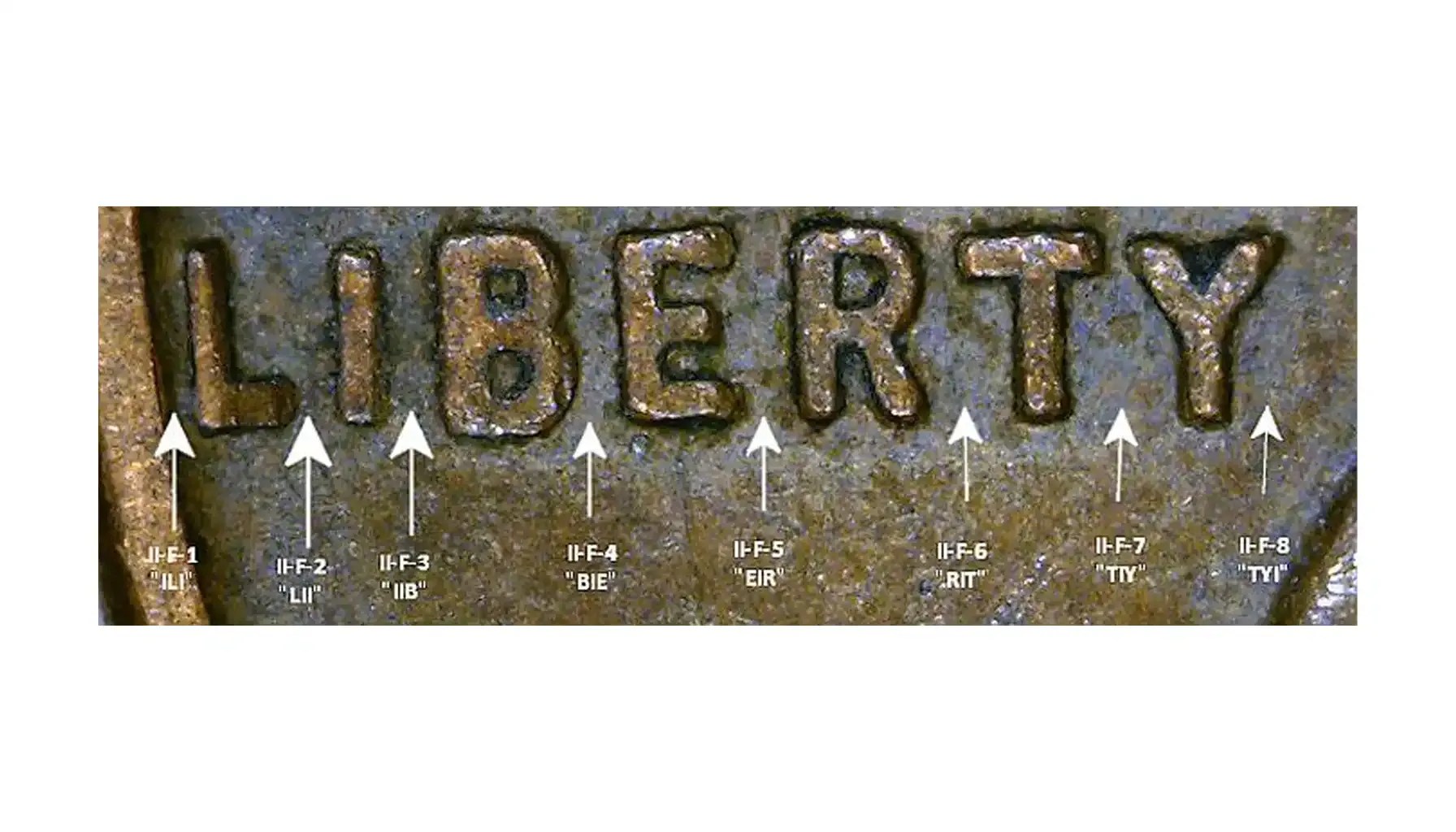
A quirky and well-loved minor error, the “BIE” variety refers to a vertical die break that appears between the letters “B” and “E” in LIBERTY, forming what looks like an accidental “I.”
What to look for:
Thin vertical blob between the “B” and “E”
Occurs due to progressive die fatigue
Collected as a novelty within Lincoln cent sets
What is a 1934 penny worth here? $5 to $50 depending on clarity, location, and grade.
4. Die Crack or Cud

Cuds and die cracks are the result of damage or weakness in the coin die. They manifest as raised, unstruck blobs or irregular lines on the coin’s surface.
What to look for:
A raised lump along the rim (cud)
Jagged or branching lines on the coin’s surface (die crack)
May affect lettering, portrait, or reverse design
Is a 1934 penny worth anything with this error? $10 to $80+, with dramatic or well-placed cuds commanding higher prices.
5. Struck Through Error
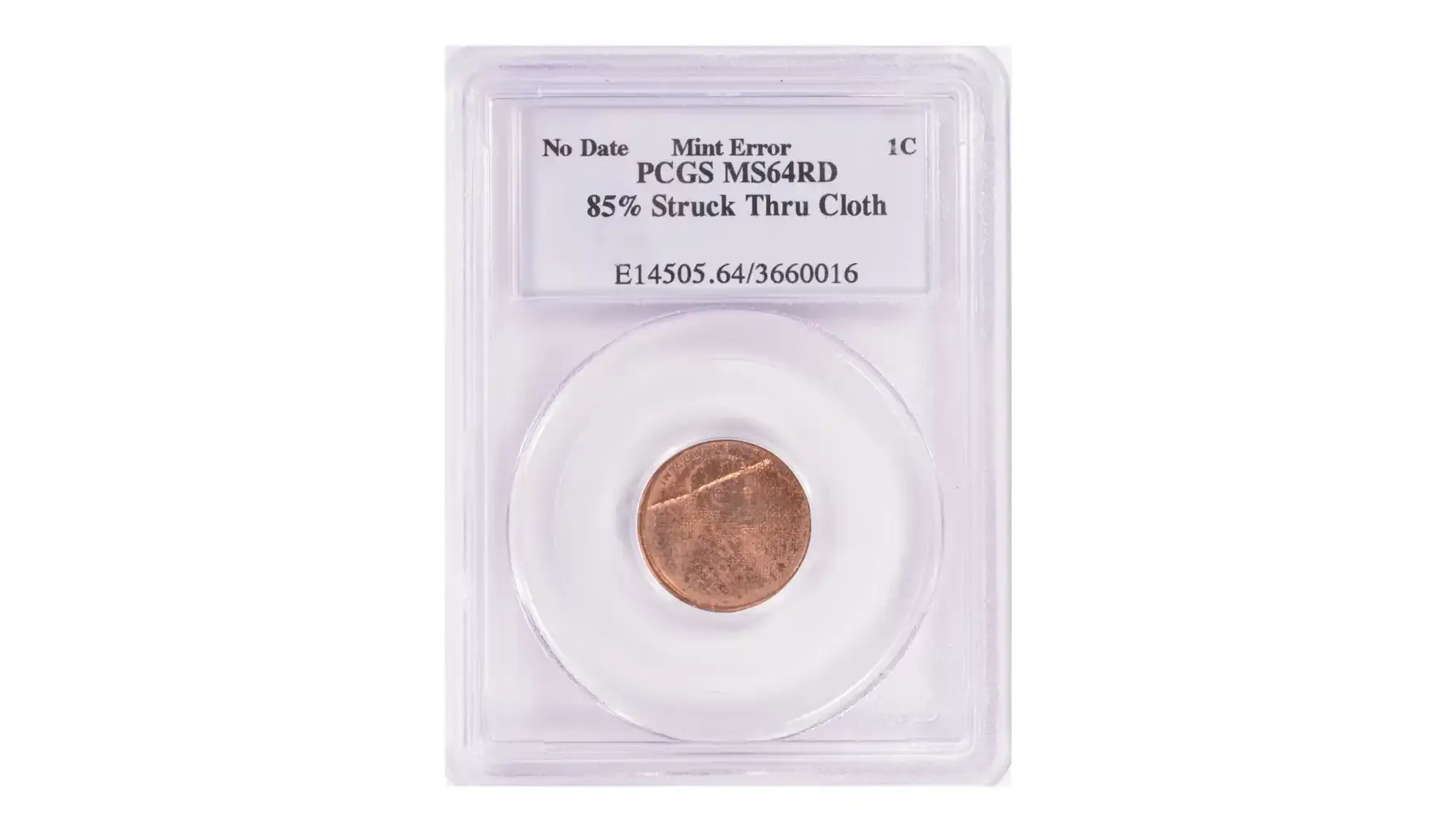
This error happens when foreign debris or grease obstructs the die or planchet during striking, creating a distorted or partially missing image.
What to look for:
Flattened, blurry, or missing design elements
Depressions or “ghost zones” where the metal didn’t strike cleanly
May resemble soft smudges or unnatural fields
Here’s the 1934 wheat penny value today: $15 to $100+, especially for larger or clearer examples.
6. Off-Center Strike
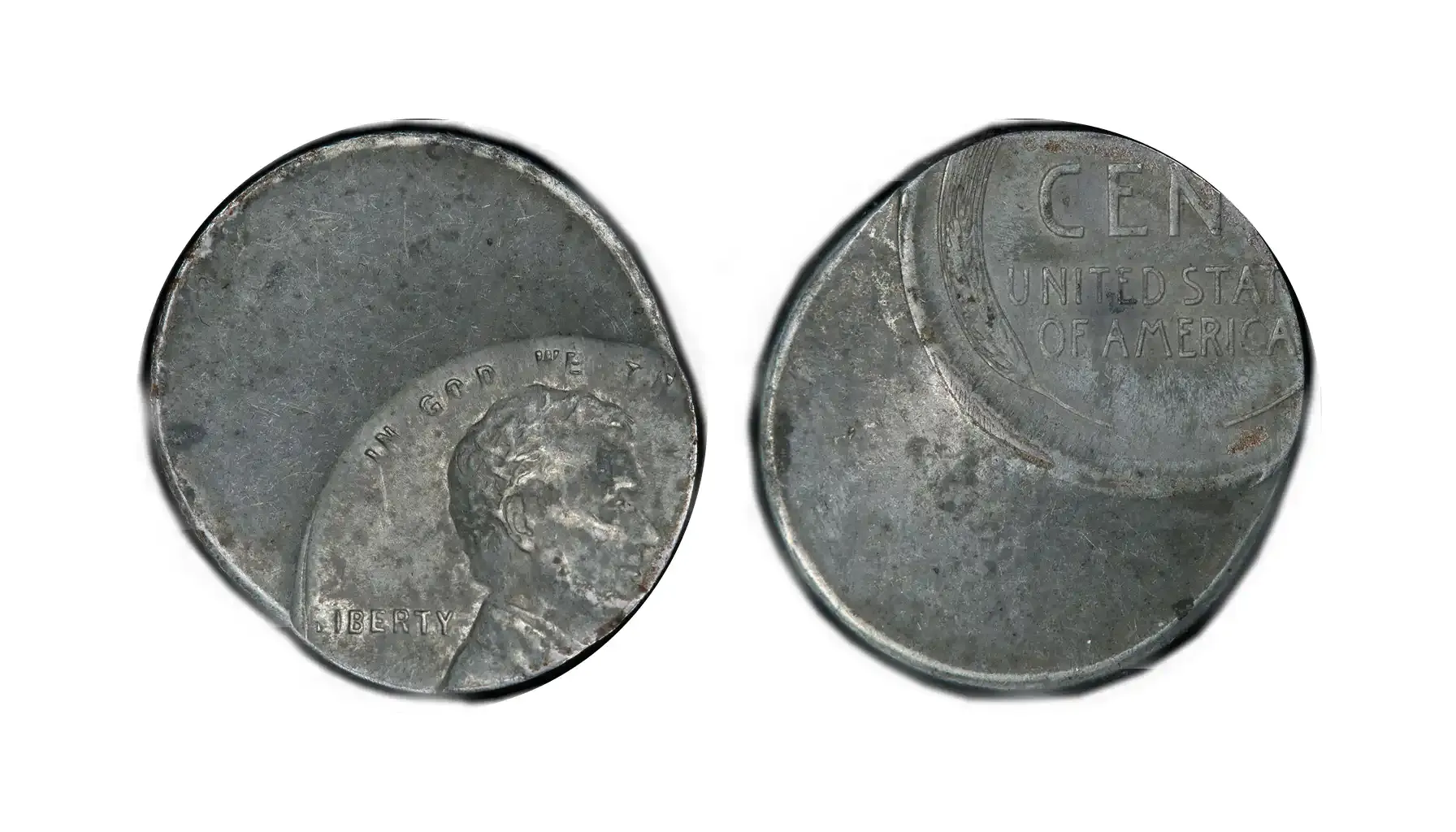
Caused by misalignment of the planchet during striking, an off-center strike leaves part of the coin blank and the design partially shifted.
What to look for:
Design clearly shifted toward one side
Blank crescent or wedge shape on the edge
The date must be visible to retain full value
Collector value of a 1934 wheat penny: $25 to $150+, with the highest prices for dramatic off-centering (30% or more) with a full, readable date.
7. Clipped Planchet
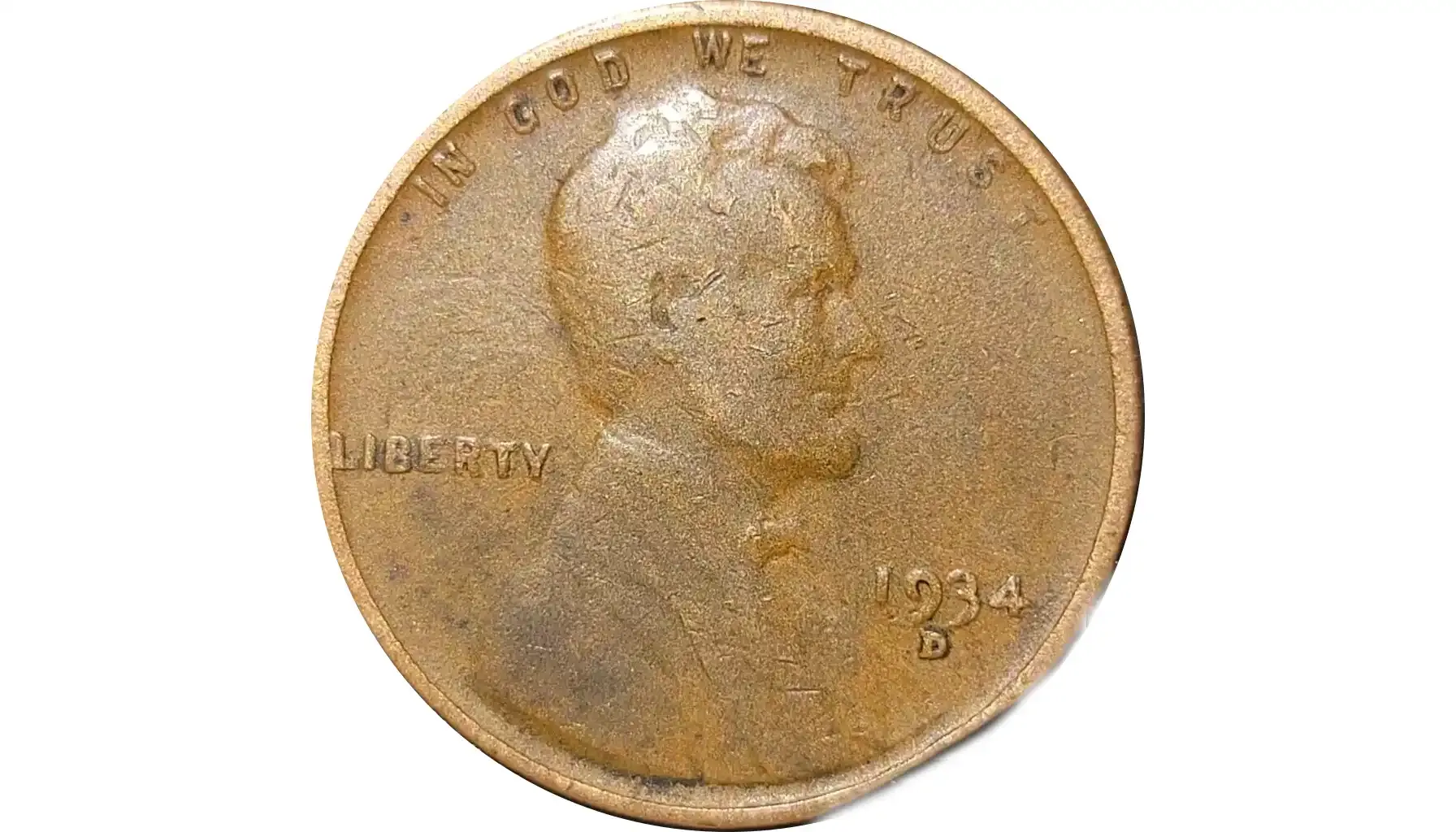
A clip error results when a metal strip is misfed during blanking, producing a coin with a missing curved or straight section.
What to look for:
Smooth crescent-shaped bite taken from the edge
No signs of post-mint damage (no sharp edges or folds)
Rim may show metal flow distortion near the clip
Collector value of a 1934 penny: $20 to $100+, depending on the size and location of the clip.
8. Broadstrike (Collar Malfunction)
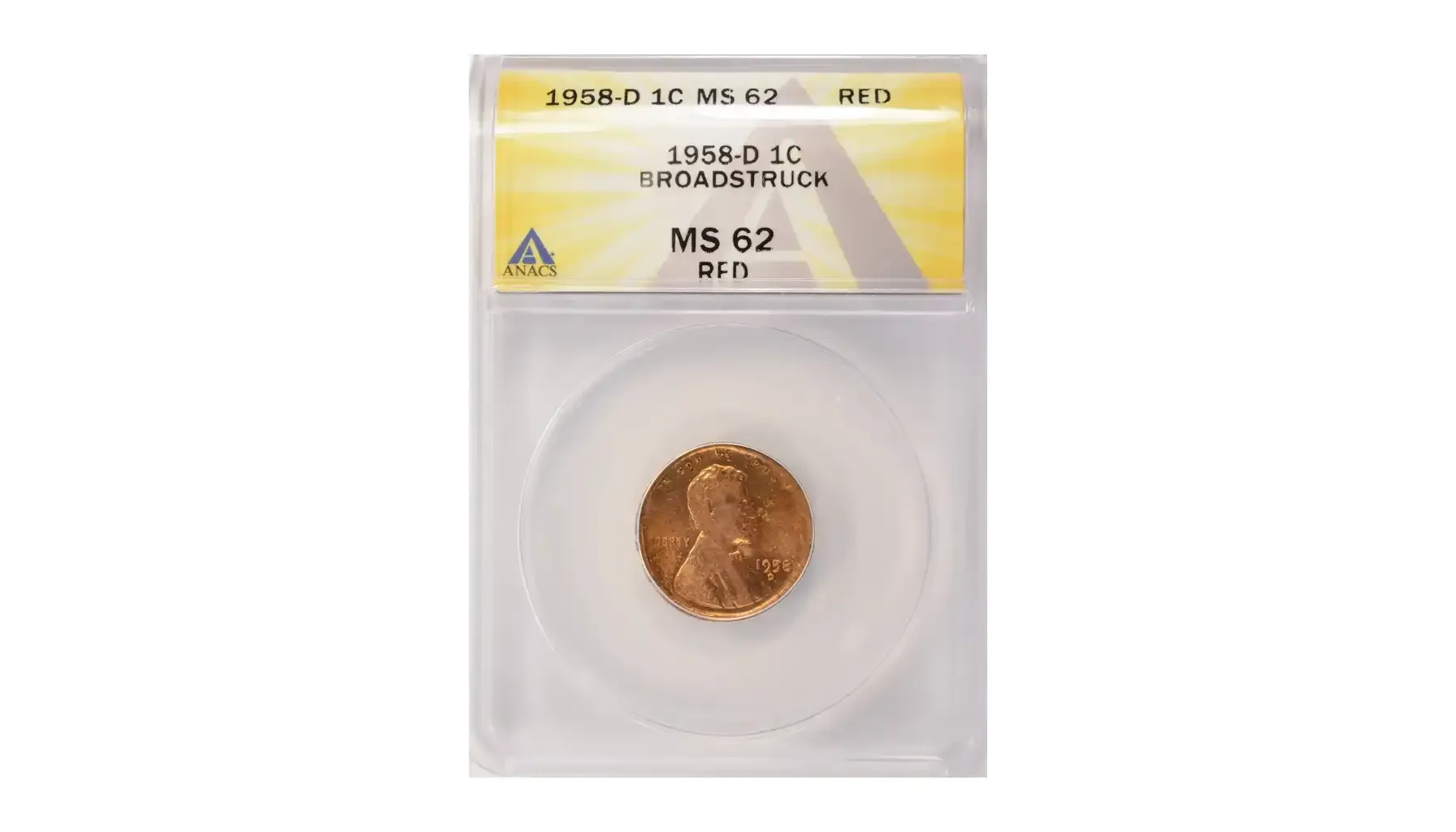
This occurs when the collar die fails, allowing the planchet to expand beyond its normal diameter during striking.
What to look for:
Coin appears flatter and wider than normal
Edge is smooth (no raised rim)
Often slightly warped or stretched in appearance
Collector 1934 copper penny value: $20 to $60+, valued for its unusual shape and diagnostic features.
9. Wrong Planchet Error (Extremely Rare)
In exceptionally rare cases, a 1934 cent might have been accidentally struck on a planchet intended for another denomination (e.g., a dime).
What to look for:
Incorrect weight (standard is 3.11g)
Smaller or larger diameter than normal
Incomplete strike or missing rim
Is a 1934 wheat penny worth anything in this case? $300 to $1,000+ depending on rarity, type of planchet, and grade. Requires third-party authentication.

How to Evaluate Your 1934 Lincoln Wheat Penny
Knowing what makes your coin special comes down to three professional grading factors:
1. Mint Mark Identification
1934 penny value no mint mark = Philadelphia
1934 D wheat penny value = Denver
1934-S does not exist—beware of fakes or altered coins.
2. Color Classification
BN (Brown): Most circulated examples fall here. Dull but collectible.
RB (Red-Brown): Partial red surfaces; better appeal and 1934 Lincoln penny value.
RD (Red): Brilliant original mint luster—highest value.
3. Grade
Use the Sheldon scale from 1–70, or look for certified grades:
VG–XF: Modest value (up to $1)
MS60–MS64: $10–$60, depending on mint
MS65+ RD: $100 – $300+
MS67 RD or with rare error: $1,000 – $1,750+
Real Market Data: Recent Auction Highlights
Date | Coin | Grade | Color | Price Realized | Auction House |
May 2024 | 1934 wheat penny value no mint mark | MS68 | RD | $3,480 | PCGS |
July 2003 | 1934 penny no mint mark value | MS68 | RD | $12,650 | Heritage Auctions |
September 2018 | 1934-D | MS67+ | RD | $20,350 | Heritage Auctions |
March 2025 | 1934-D | MS67+ | RD | $2,100 (CDN Bid) | David Lawrence |
Tips for Your Collection
Never clean your penny — cleaning can permanently damage patina and reduce its value of 1934 wheat penny no mint mark or D mint mark.
Use a magnifier (10x or higher) to check for doubling or repunched marks.
Compare weights — standard 1934 pennies weigh 3.11g; lighter or heavier may indicate planchet errors.
Invest in storage — use inert holders or coin flips to preserve surface and color.
US Coin 1934-D Lincoln Penny Coins Copy 95% Coper Manufacturing
What Are They?
These are reproduction or replica coins mimicking the original 1934-D Lincoln Wheat cent, typically:
Made for educational, novelty, or commemorative purposes
Often sold online or in collector packs
Sometimes labeled "COPY" in accordance with the Hobby Protection Act
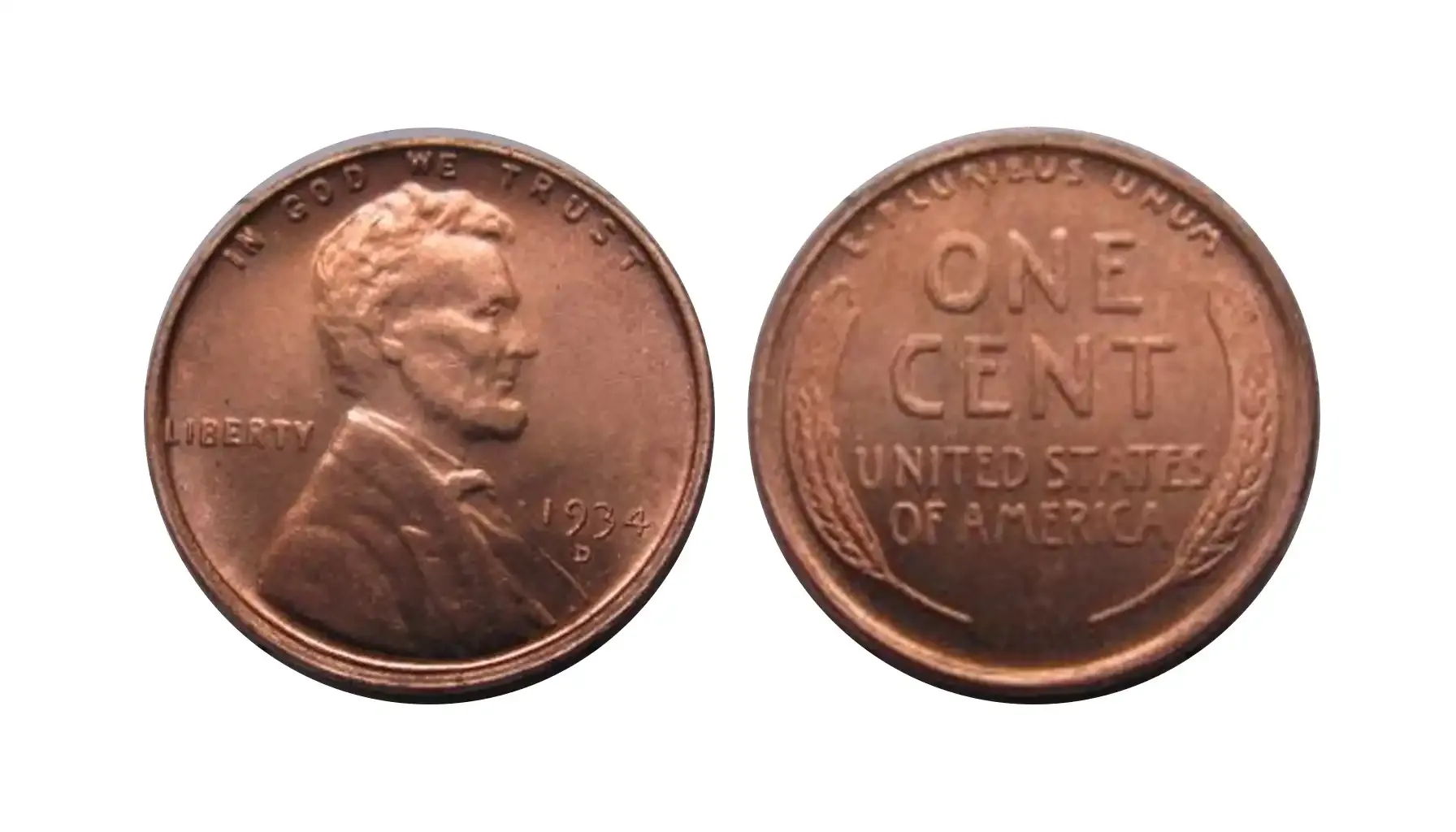
Composition
While authentic 1934-D coins were struck in:
95% copper, 5% tin and zinc, weighing 3.11 grams, some modern replicas are manufactured using a similar alloy (95% copper), either:
Pure copper, or
Copper-plated zinc, especially if mass-produced
These replicas aim to imitate the original color and weight but lack actual historical value.
Differences Between Originals and Copies
1. Legality & Markings:
U.S. law requires replicas to be stamped with the word “COPY” (typically on the reverse)
Absence of this stamp on a newly manufactured item may constitute a counterfeit
2. Minting Details:
Real 1934-D coins feature a distinct mint mark (D) below the date, precisely sized and placed
Reproductions often show weaker detail, especially in lettering, Lincoln’s coat, and wheat stalks
3. Surface and Strike:
Original 1934-D cents show a business-strike finish with moderate wear in circulated examples
Copies often have a proof-like or overly polished look, or may appear too new for their age
4. Weight and Dimensions:
Authentic: 3.11 grams, 19.05 mm diameter
Copies may be lighter or slightly off in size if not precisely struck
Value of 1934-D “Copy” Pennies
Type | What is a 1934 wheat penny worth? |
Legal replica (with “COPY”) | $0.10 – $1.00 |
Replica in copper-plated zinc | <$0.50 |
Counterfeit (illegal) | $0, not legal to sell |
How to Verify Authenticity
If you suspect your 1934-D Lincoln cent is a copy:
Use a scale accurate to 0.01g (should be ~3.11g)
Inspect under magnification for “COPY” stamp or casting flaws
Consult a certified numismatist or use tools like Coin ID Scanner for visual verification
The Verdict: How Much Is a Penny from 1934 Worth?
Most 1934 Lincoln cents will buy you exactly 5 cents’ worth of nostalgia. But for a select few, hiding in mint sets, family heirlooms, or flea market finds, the story is different. With a little investigation, your 1934 no mint wheat penny value could be worth $100, $500, or even $1,500.
Disclaimer: For actual prices and 1934 wheat penny no mint mark value sums, contact official auction houses or grading services.

